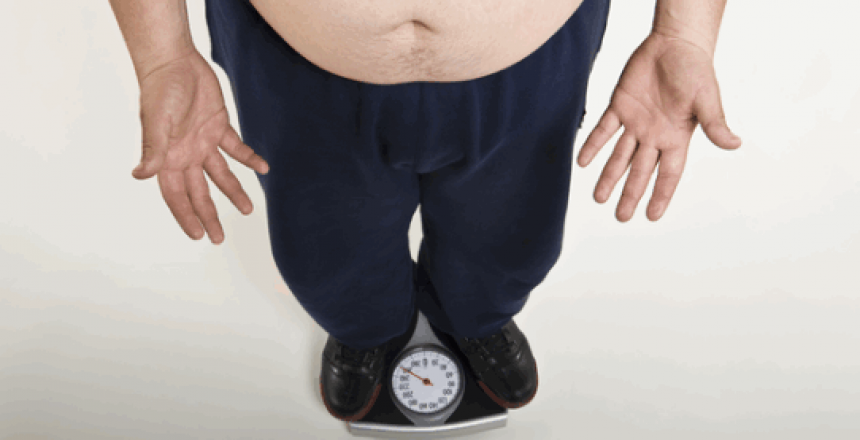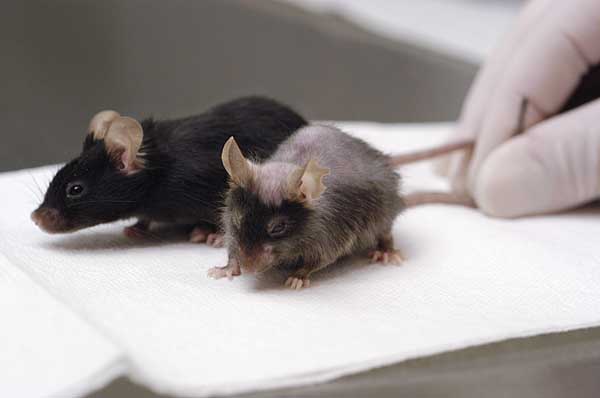Metabolic syndrome is the most insidious promoter of chronic disease, such as heart disease and cancer, in the U.S. and much of the world today. If you avoid metabolic syndrome, you’ll greatly decrease your risk of ill health, even as you age. Let’s take a look at how metabolic syndrome promotes chronic disease.
What is metabolic syndrome?
Metabolic syndrome is a cluster of signs and symptoms unified by one mechanism: insulin resistance.
You have metabolic syndrome if you have any three of the following five risk factors (ref.):
- large waistline
- high triglycerides
- low HDL cholesterol
- high blood pressure
- high fasting blood sugar.
One way to look at metabolic syndrome is as a pot belly along with insulin resistance.
High prevalence of metabolic syndrome
This is where things get scary.
Metabolic syndrome is extremely prevalent, and is closely tied to the obesity epidemic.
Among American men, metabolic syndrome increase with age.
- In men from age 20-39, the rate of metabolic syndrome is 20%.
- In men from 40-59, the rate is 41%.
- In men 60 and up, the rate is 52%. (Ref.)
Among all U.S. adults, as many as 52% are diabetic or pre-diabetic. (Ref.)
These numbers may undercount the true rate, since a large fraction of the population, as much as 80%, may have some degree of insulin resistance.
If you look at the people around you, that isn’t hard to imagine, as hardly anyone is in good shape.
Metabolic syndrome greatly increases disease risk
Just insulin resistance alone may account for most increased risk of chronic disease.
In a well-known study, Reaven and colleagues measured insulin resistance in a group of healthy people, divided them into tertiles (thirds), and followed them for 6 years. They looked at how many in each group developed heart disease, stroke, hypertension, cancer, and diabetes. Results below.

No one in the lowest third group developed any of those diseases. All of those who did develop them were in the upper two thirds of insulin resistance. (Discussed here.)
Imagine adding hypertension or high triglycerides or any of the other risk factors.
Metabolic syndrome increases the risk of heart disease three times, and risk of diabetes five times. (Ref.)
Visceral (abdominal) fat, or central obesity, is highly associated with metabolic syndrome.
Men with high visceral fat have around a 5-fold increased risk for prostate cancer.(Ref.)
Women with high visceral fat have a nearly 10-fold risk of breast cancer. (Ref.)
As you can see, metabolic syndrome entails huge risks for heart disease, cancer, and diabetes.
If the Reaven study is more widely applicable, virtually all of the risk is seen in those with metabolic syndrome and/or insulin resistance.
The good news is, if you stay free of metabolic syndrome, your risk of these diseases is very low.
Metabolic syndrome: the modern condition
Why is there so much metabolic syndrome?
The conditions of modern times increase its incidence, which is highly correlated to obesity.
(Although don’t be complacent if your weight is normal. A large number of normal weight people, “skinny-fat”, have deranged glucose metabolism, if not frank metabolic syndrome.)
The processed food trifecta of refined carbohydrates, sugar, and seed oils lies behind the increase in obesity and metabolic syndrome.
Add to that 24/7 availability of garbage food, and the couch potato lifestyle so many of lead, and you’ve got the recipe for insulin resistance, metabolic syndrome, and chronic disease.
How to prevent metabolic syndrome
Only around 10% of people at age 70 are free from chronic disease and frailty. Only 1% of those 85 and up are completely healthy.
If you want to be among them, you must stay free of metabolic syndrome.
How to do this?
- Stay lean. Avoid ultra-processed foods, with their refined carbs, seed oils, and sugar. Eat low-carb.
- Deplete glycogen. The storage form of carbohydrates is glycogen, and depleting it regularly increases insulin sensitivity and decreases your odds of being overweight. You do this through resistance training, intermittent fasting, and avoiding refined carbohydrates and sugar.
That’s it.
If you want to live in good health and free from disease, you can’t take the path that most of our countrymen are taking.
Average people have average health and an average lifespan, which is currently a paltry 76 for men, and 81 for women.














7 Comments
Another interesting article PD.
I’d like to know where I rank among the tertiles mentioned above. Sadly SSPG isn;t something that is relatable to me. Do you have any idea on what levels of SSPG would correlate with fasting insulin or gluose levels?
Thanks, American. The best equivalent to SSPG would be HOMA-IR, which can be calculated from fasting glucose and insulin, so it’s easy to do. There’s discussion of what constitutes normal HOMA-IR here. I don’t know how one would determine tertiles of HOMA-IR but you could probably get some idea with a deep dive into the literature. However, if your HOMA-IR is quite low, then you’re undoubtedly good.
I would add a third, which may already implicitly be covered partially by the first two:
3. Check and control your iron level.
I’m not sure if this is OT, but interesting data on height, weight and BMI:
https://politicalcalculations.blogspot.com/2018/10/how-do-american-adults-measure-up.html
The tide is turning.
https://www.macrobusiness.com.au/2018/10/aussie-dieticians-backflip-fat/
I’m curious to learn that if one feels that they are becoming insulin resistant, is it possible to stop it, and perhaps even reverse it?
Hi Mark, my answer is yes and no. No because you can’t really feel anything, but yes, because lack of exercise, obesity, and crap high carb food conduce to insulin resistance. So if you have any or all of these 3 things, you’re almost certainly insulin resistant, and some 90% of the population does.